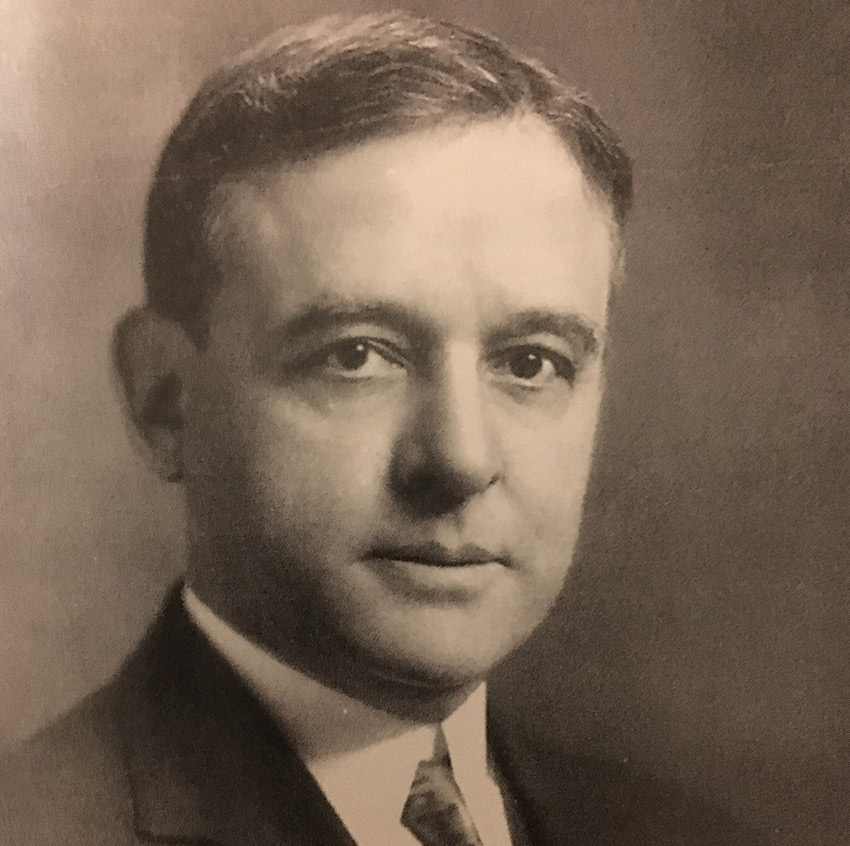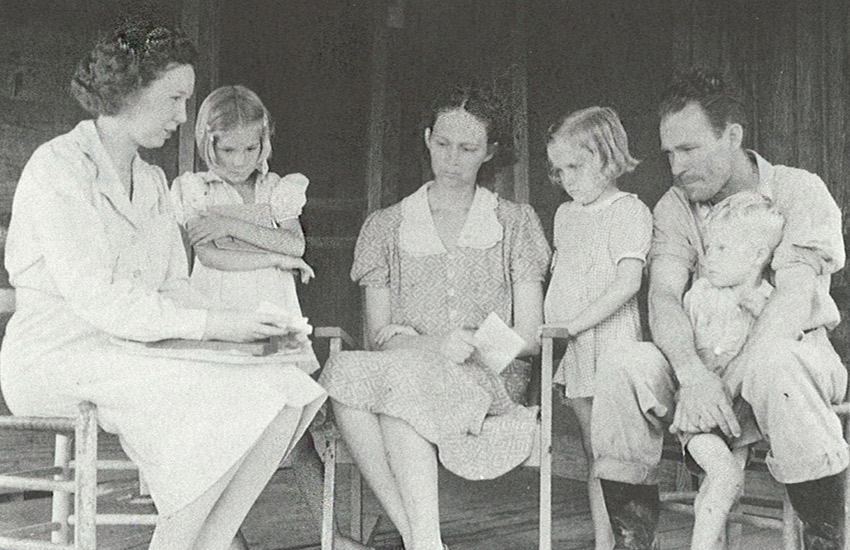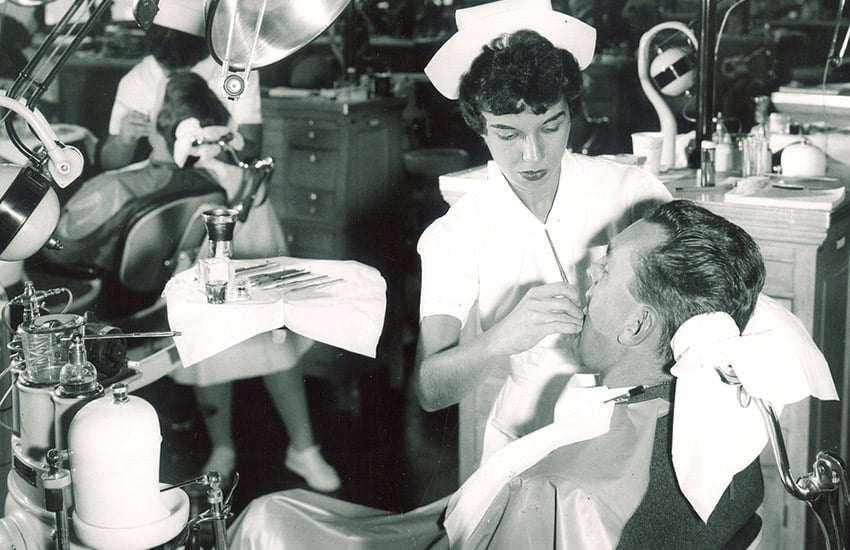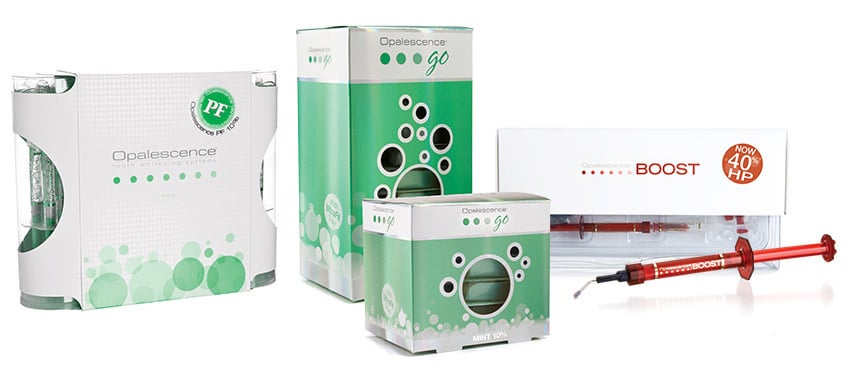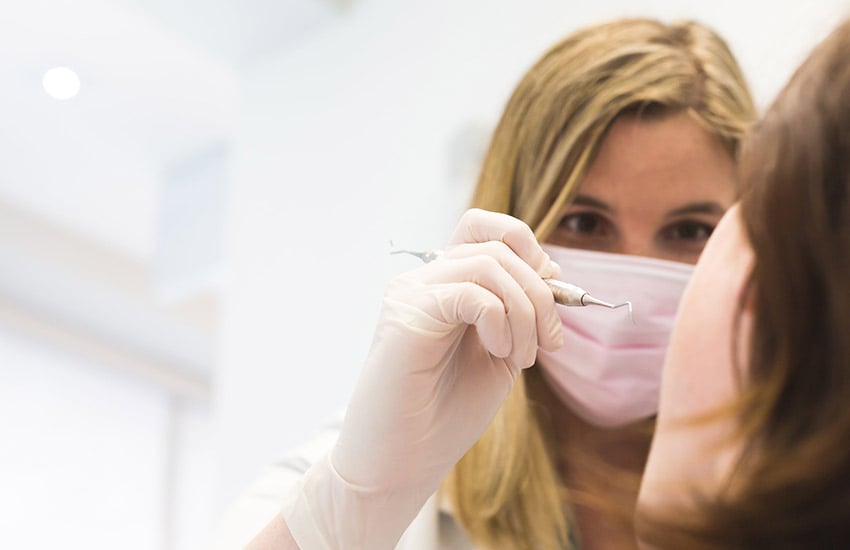“If we make our vision the conservation of tooth structure, but we never mention prevention or oral hygiene, we are hypocrites.”
– Dr. Dan Fischer
Here at Ultradent, proper dental hygiene plays a key role in achieving our vision to improve oral health globally through minimally invasive dentistry. Without proper dental hygiene procedures and skilled hygienists to administer them, Ultradent’s vision and goal would, as Dr. Fischer says, not only be hypocritical…but in the end, futile.
So here’s to all of the dental hygienists out there who work hard every day to prevent tooth decay, teach and promote better oral health, and, when all else fails, help patients get back on track to good oral health through the many procedures and treatments they provide. Most importantly, thank you to all of the hygienists who carry their patients’ best interests at heart. We salute you and congratulate you on 104 wonderful years in the business!
Now…let’s take a look back over the last 104 years to see just how far dental hygiene has come.
The Beginnings of Dental Hygiene
With the world’s first formal dental school dating back to 1828, it seems ironic that it took almost 100 years for dental hygiene—the foundation of the maintenance of healthy teeth—to catch up.
It was a dentist by the name of Dr. Alfred Fones who is credited as the “Father of Dental Hygiene,” as he educated the first ever dental hygienist, his assistant Irene Newman. He trained her for one year in his practice before allowing her to take over the duties of scaling and polishing the patients’ teeth.
In 1913, Fones would establish the Fones School of Dental Hygiene at the University of Bridgeport in Bridgeport, Connecticut, which continues to educate dental hygienists today.

Left: The first graduating class from the
Fones School of Dental Hygiene, 1914
Right: Students of the first graduating class
of the Fones School of Dental Hygiene practice
their skills in the lab
Since 1913, the profession has grown from one woman, Irene Newman, to more than 200,000 hygienists in the U.S. workforce today. In fact, last year, careercast.com named the job of a dental hygienist as the #14 best job in the country. This is thanks in large part to the positive hiring outlook, substantial salary, low stress, and family-friendly work environment.
Significant Milestones in Dental Hygiene
Through Fones’ championship of the dental hygiene profession, the state of Connecticut was the first state in the union to allow prophylaxis by a trained dental hygienist. But the practice caught on and spread throughout the country quickly.
1920s
By 1926, just thirteen short years after the advent of the profession, 30 states employed licensed dental hygienists in practices throughout the country.
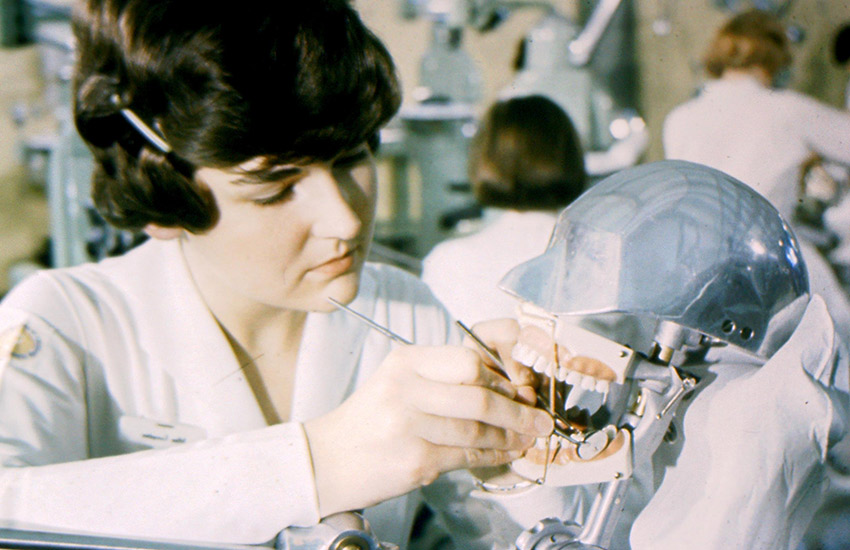
A student polishes her skills in 1926 as the
dental hygiene profession begins
rapidly growing throughout the country
1930s
1940s
On January 25, 1945, Grand Rapids, Michigan became the first city to add fluoride to its water. The Read more about the discovery of naturally fluoridated water.
1950s
In the 1950s, regular teeth cleanings became the standard for Americans, increasing dental office visits and further popularizing preventative care. Thanks to this, hygienists today can look forward to a great career. But let’s not overlook the benefits that they’ve brought over the years to the folks in the dental chair. Because of the popularization of dental hygiene, patients enjoy a wider breadth of preventative care than ever before. Before dental hygiene, one only visited the dentist after the onset of a toothache, which often served as a warning sign of more serious problems due to, well, poor dental hygiene.
In 1955, the first fluoridated toothpastes hit the market, helping to further prevent tooth decay throughout the country.

Crest kicked off its fluoride toothpaste campaign
with original illustrations of happy children with
no cavities by the legendary Norman Rockwell
1960s–1970s
As the dental hygiene profession continued to grow and the equal rights movement spread, the word "female" was deleted from the ADHA Constitution and Bylaws in 1964. Subsequently, the first male dental hygienist, Jack Orio, RDH, graduated from the University of New Mexico in 1965.
In 1972, the first four dental hygienists were commissioned into the US Army, and by 1975, the U.S. Army expanded the addition of dental hygienists to its forces to provide services for enlisted soldiers and their families. During the 1970s, sealants also gained widespread popularity as a tool for caries prevention.

An enlisted male hygiensts works on a
fellow soldier or soldier’s family member
1980s
With the discovery of the AIDS virus in 1981, widespread panic spread throughout the country, as the cause and means of infection had not yet been identified. However, as researchers learned more, OSHA mandated changes in sterilization and personal protection equipment throughout dental and medical offices, requiring dentists and hygienists to wear gloves, eyewear, and masks while working on patients.
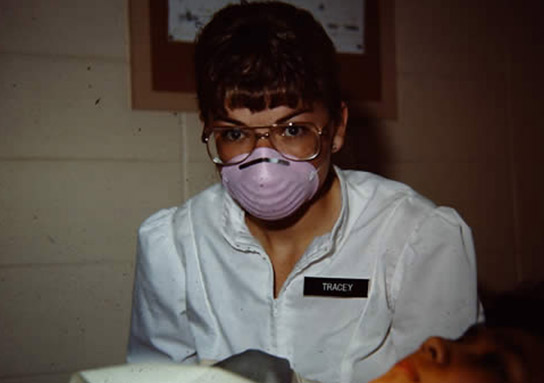
Dental hygienist in the 1980s wears protective
gear while working on a patient to prevent
the spread of AIDS
1990s
In the 1990s, the advent of tooth whitening and its popularization (in large part by Ultradent’s Opalescence Tooth Whitening Systems drove people to the dental office by the masses, where they were fitted for custom whitening trays and educated on the tooth whitening process by hygienists. Since then, the bright smile craze has never subsided, and new and inventive tooth whitening systems like Ultradent’s in-office whitening system, Opalescence® Boost™ whitening, and Opalescence’s disposable, take-home whitening system, Opalescence Go® whitening have made the process more easy and convenient than ever!
2000s–Present
Lastly, hygienists provide therapeutic services and treatments meant to stop disease and maintain or regain oral health. Some of these core procedures involve prophylaxis, scaling and root planing, the application of dental sealants and fluoride treatments, and in some cases, administering local anesthesia.







